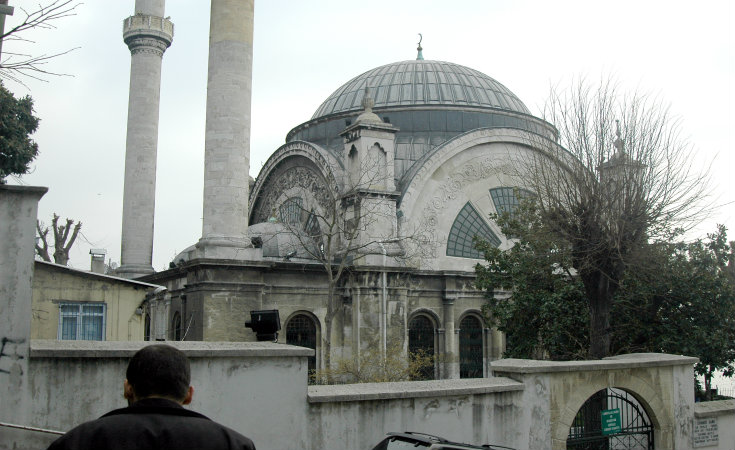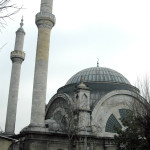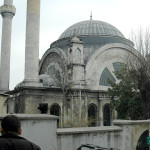Cihangir Camiisi (Cihangir Mosque)
The Cihangir Mosque was commissioned by Süleyman the Great in memory of his two sons - Şehzade Mehmet and Cihangir - who had died at young ages; the architect of the mosque was Sinan.

Loading ...
Address
Pürtelaş Mah. Cihangir Yokuşu No:24, Beyoğlu
Visiting Hours
Daily, except prayer times.
Muslims pray five times each day. The precise timing of prayers often vary by a few minutes each day, therefore throughout a year there is a wide range of prayer times. The reason is that Islamic prayer times were traditionally set according to the movement of the sun.
Actually Islamic prayers are fixed at the same "time" period each day -- before dawn, noon, afternoon, sunset, and evening. Because of the rotation of the earth, the latitudes of the earth’s locations, daylight savings time, etc. -- the "times" (according to the clock) for these prayers change depending on time of day and location.
The Cihangir Mosque was commissioned by Süleyman the Great in memory of his two sons – Şehzade Mehmet and Cihangir – both of whom had died at a young age; the architect of the mosque was Sinan. Built in 1559, there is also an Ottoman secondary school (sübyab) attached to the mosque. Having suffered five different fires over the course of time, it was most recently rebuilt in 1889 during the reign of Abdülhamid II. The mosque was built in the plan of a square with one dome, and covers an area of 2000 square meters. Sinan originally used the the Mihrimah Sultan Mosque in Edirne as a model, but after being destroyed and rebuilt so many times, it is unknown who is responsible for the current design.
Mosque is a place of worship for Muslims. It comes from the Arabic word 'masjid' which literally means "a place for prostration". Mosques are also places where Muslims come together for different purposes such as education, social gatherings, public meetings, exhibitions, lectures etc. Although there is no specific requirement for mosques in terms of their architecture, one can see some common features inside and outside of many mosques such as minarets, domes, ablution areas, prayer niche (mihrab), pulpit (minbar) and so on.
Muslims are obliged to perform the ritual worship 5 times a day. They are not required to attend a mosque for each of these prayers however in order to interact with the community they are encouraged to pray in congregation. Friday noon is the only time in a week when Muslims must definitely join the congregational prayer in a mosque after which they can continue their work, education or other commitments.
Azan or the call for prayer is a vocal announcement that one can hear from minarets 5 times a day. The call to prayer is made live -even early in the morning- by a person called 'muazzin'. The muazzins are usually chosen from people with loud and beautiful voices and trained over years to make this announcement beautifully and invite people to worship.

























